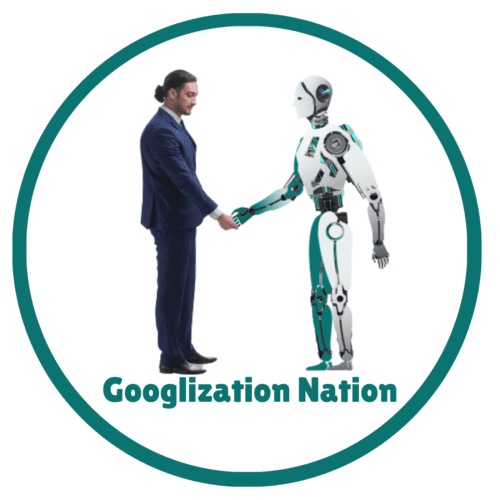Do You Want Culture ADD or Culture FIT?
An Interview with Jen Ferguson
FEATURED GUEST
Hiring for culture add is not only the best strategy, it’s the right thing to do. Jen Ferguson believes that employers should look at a lot more in the hiring process beyond whether a candidate fits the established culture of the company. In fact, this practice can lead to bias and discrimination, even in the best companies. Rather, Ferguson advocates hiring based on alignment to core organizational values and what the employee can add to the culture. This shifts the mindset from trying to find the round peg to fit in the round hole and brings a diversity of voices and thoughts to the table to nurture a dynamic workforce.
LISTEN, WATCH, SUBSCRIBE
Quotes
[12:20] “They are using this idea of culture fit by weaponizing it against people who are different. If you’re not like me, you’re not going to fit within our space.”
[20:43] “Is it the culture fit or the culture add that’s going to help you push the status quo?”
[26:58] “The employee experience starts at the very, very beginning.”
[27:16] “You can hire all the culture adds, but if you’re not creating an inclusive environment where their voice is going to be heard and they’re going to have an ability to thrive, they’re really going to just leave.”
Podcast Notes
Hiring for culture “fit” is over. Jen Ferguson, the founder of Sales 911, believes that hiring for culture “add” is the best way to create workplaces that are adaptable, diverse, and effective. Continuing to bring on people who mirror the rest of your workforce prohibits your company from being able to see a wide range of thoughts and experiences that will give you a strong competitive edge. Instead, looking for people to add to your culture will nurture a strong diversity of thought and prepare your company to dive into the future.
Culture vs. Values [11:20]
Hiring for culture add instead of culture fit does not mean ignoring company values. It is still important that employees are able to engage in the culture of the company. However, that is not the same thing as hiring somebody who is simply going to mirror the established culture.
Instead, Ferguson says that the goal should be to hire people who align with company values but bring a fresh perspective that adds to your culture. This has value by developing a diversity of thought within the workplace.
The danger of culture fit [12:00]
[12:20] “They are using this idea of culture fit by weaponizing it against people who are different. If you’re not like me, you’re not going to fit within our space.”
Talking about culture fit while making hiring decisions opens the door for unconscious bias. It brings in a subjective element rather than evaluating potential hires based on skills, experiences, and values. This idea of culture fit is often weaponized against people who are different in age, sex, race, or any other thing that makes us unique.
On the other hand, seeking out candidates who share your company’s values but bring diversity encourages inclusion in the workplace, which is essential for a productive, collaborative environment that engages many different perspectives. For instance, some organizations embed their unconscious biases in products by making them inaccessible to some customers. This kind of accidental bias can be preempted by fostering a workplace that has a strong diversity of thought.
Pushing the status quo with culture add [18:10]
[20:43] “Is it the culture fit or the culture add that’s going to help you push the status quo?”
When striving for workplace diversity some people have a common concern: Is there some point at which diversity begins to cause division? Is there such a thing as too much diversity? Ferguson says that the answer to this concern depends on the personalities of the individuals who run the organization.
Organization leaders who like to push the status quo are better able to productively channel diversity than those who do not. These leaders look at the whole person, not just their differences. They see what motivates them, what inspires them, and what success looks like for them, and they use this to support their employees.
When organization leaders recognize diversity and cultural adds as the strengths that they are, they can set up their organizations to lead into the future. In fact, focusing on the benefits of diversity, transferable skills, and culture add, employers will be less likely to miss great additions to their team for lack of rigid experiences.
Shifting from culture fit to culture add [26:40]
[27:16] “You can hire all the culture adds, but if you’re not creating an inclusive environment where their voice is going to be heard and they’re going to have an ability to thrive, they’re really going to just leave.”
The first step in making intentional change to seek out culture adds starts with examining hiring practices. For instance, this might involve recording interviews and reviewing them with organization leaders. The employee experience starts at the interview, and if organizations don’t build inclusive environments there, it will be hard to find culture adds that bring diversity.
But hiring practices are not enough. Without intentionally building an environment that listens to and values diverse voices, even the best culture add hires will leave. This means bringing voices that are different from yours to the table and acting on what they have to say.
Ahead of the Curve with Joyce Gioia
Ahead of the Curve: Normal 2.0 [33:23]
In the first edition of this new segment, Joyce Gioia, CEO of The Herman Group, brings her perspective as a celebrity futurist to the show to grapple with what HR looks like in the “normal 2.0.”
One major change Gioia identifies is that companies can now hire people from anywhere in the world as long as they are willing to work on the company’s schedule. This exciting change means that companies now have access to a wider talent pool, but it also requires new skills in workers.
One new skill companies will increasingly require as they embrace this change is the ability to work independently and stay focused in distracting environments. Gioia predicts this need will lead to a rise of coaching in the skills of self-motivation and especially focus. This can even lead to assessments that evaluate how well people can work on their own and might even lead hiring managers to evaluate talent based on that skill.
Even more exciting than recruiting, Gioia is excited about changes happening in onboarding. Similar to IBM’s use of “Second Life” to onboard entire cohorts of employees from around the world at the same time, companies have the opportunity to do the same thing (but better) in this new normal.
Gioia is also excited about the new concept of “workification” she has developed. Instead of “gamifying” work that needs to be done, Gioia proposes incorporating work or training into existing games. This can be applied to recruiting, onboarding, and day-to-day work functions.
Finally, Gioia points out the importance of empathy in employee retention as we continue moving into an increasingly digitized world. Employees are growing to value purpose over mission, and companies will need to adapt to this change even as everything is changing, too.







